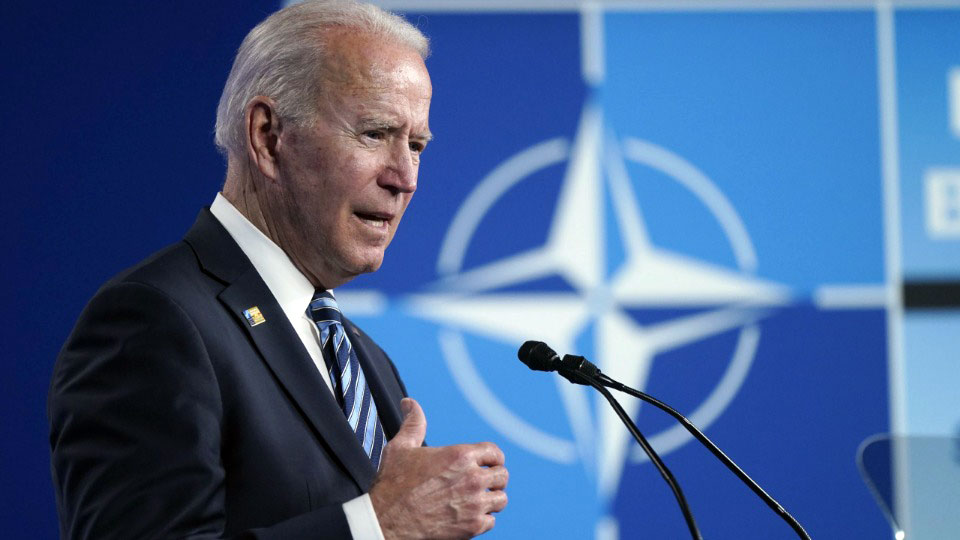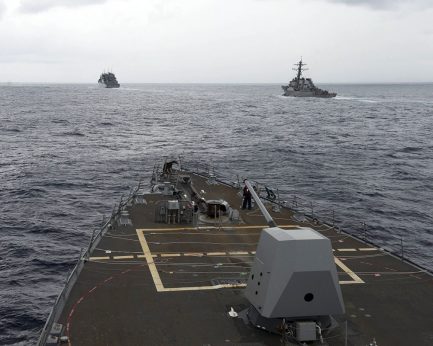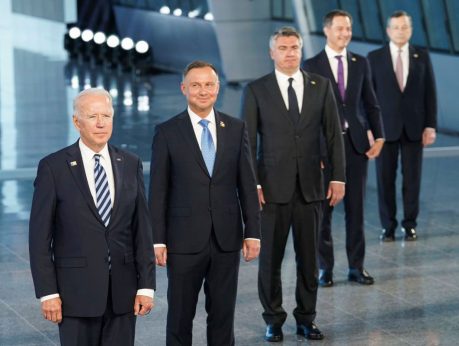
Watch what they do, not just what they say. That’s the only conclusion to reach when assessing the stance taken toward China by the NATO countries this week. Several leaders at the U.S.-led military alliance’s summit in Brussels tripped over themselves in front of the press to claim they are not seeking a new Cold War with the East Asian power, but their words to reporters were out of sync with a strategy statement issued at the end of the meeting and with reality on the ground.
“We are not entering a new cold war, and China is not our adversary, not our enemy,” Secretary-General Jens Stoltenberg assured reporters at a pre-summit press conference. “But,” he said, “we need to address together…the challenges that the rise of China poses to our security.”
British Prime Minister Boris Johnson joined the chorus, pledging that nobody “wants to descend into a new cold war with China,” however, he asserted that China is a “new strategic consideration for NATO.”
U.S. President Joe Biden chimed in later, at the conclusion of the summit, and was blunter. He said that Russia—NATO’s traditional target—and China “are both seeking to drive a wedge in our trans-Atlantic solidarity.”
The abrupt shift of the ostensibly Europe-based military pact toward Asia appears to be driven by the new U.S. administration’s determination to shuffle its allies into line against China while also maintaining an aggressive position toward Russia. Previously, China barely registered a mention at NATO meetings or in its policy documents.

But in a communiqué signed by the 30 NATO leaders, China was singled out for displaying “ambitions and assertive behavior” supposedly threatening to the “rules-based international order.” It was criticized for “lack of transparency,” cooperating with Russia, modernizing its military, expanding its nuclear arsenal, and for vaguely described “coercive policies.” (A few of the charges were more than a bit ironic, given they were made by countries who are themselves some of the world’s biggest military and nuclear powers.)
More than anything, perhaps, the strategy document signaled the reassertion of U.S. dominance within the North Atlantic Treaty Organization, which was founded in 1949 to weld Western European nations into an anti-communist military alliance against the Soviet Union. And to be sure, NATO still obsesses largely with remaining prepared for war with Russia and has deployed troops right up to the Russian border, but the fixation on China is a new one for an organization still billing itself as a pact of North Atlantic countries.
During the Trump years, the U.S. had been somewhat disengaged from the internal affairs of NATO, but Biden is eager to prove that America is back in charge and wants NATO on board with U.S. military, economic, and geopolitical strategy. Confronting China is a policy orientation that carries over from one administration to the next these days, no matter which party controls the White House. Obama had the “pivot to Asia,” Trump launched his tariff war, and now Biden is making his mark.
The U.S. capitalist class and its political representatives know that the growth of China—especially in emerging sectors like AI, green technology, next-generation aircraft, and advanced infrastructure—represents a wrinkle for their hopes of continuing to control the world economy. So it’s true that China is a threat—to their profits and market share.
This was on show at not only the NATO summit but also the G-7 meeting of the major capitalist economies that preceded the Brussels get-together. There, the U.S. also pushed for a strong stance against China, orchestrating a declaration that China was engaging in “non-market policies and practices.”
That was code for the People’s Republic still being too socialist and maintaining public ownership and financial backing for significant sections of its domestic industry. When the U.S. and EU subsidize companies like Boeing and Airbus, it’s no problem. But when China provides support for its companies, that’s “non-market” behavior and can’t be tolerated.
The G-7 dressed up its attacks by also heavily spotlighting concerns around human rights in Xinjiang and labor rights when it comes to the operation of global supply chains within China. Such issues certainly merit greater daylight being shone on them, but the credibility and impartiality of the U.S. government on matters involving alleged Islamophobia or suppression of workers in other lands remains rightfully suspect in the eyes of much of the world.
Even among its allies, U.S. tactics are creating some nervousness. The U.S. may be successfully bringing its closest friends along on its drive against China, but many of them remain cautious about being too aggressive, and rightfully so. Extensive Chinese investment in the economies and critical infrastructure of several European countries is certainly reason enough for having second thoughts.
German trade with China in 2020, as just one example, was more than $257 billion. The reality is that economic cooperation with China is essential for Europe’s own growth and development—which is probably why German Chancellor Angela Merkel urged her NATO allies not to “overrate” the China threat and said, “the right balance” had to be found between challenging and cooperating with China.

Other NATO members have been less hesitant to go all in on the U.S. strategy, though. London has acted in concert with Washington in the deployment of warships to the South China Sea recently in a deliberate effort to provoke China.
Indeed, for all the talk of China being a new aggressor on the world stage, the facts show that the biggest threat to world peace is still the same one that has loomed since the end of World War II in 1945: U.S. imperialism.
The United States maintains a sprawling global network of 800 military bases in some 70 countries. Half of those—400—surround China. By contrast, China has a single base outside its borders—a small naval port in Djibouti on the Indian Ocean that has so far been mostly used to combat piracy on the high seas.
And when it comes to military spending, the U.S. continues to dwarf China. For fiscal year 2021, the U.S. has allocated a staggering $740 billion to its war machine; China by contrast budgeted only $208 billion to defense, little more than a quarter of the U.S. total.
No matter what inquiries or criticisms some might want to make of China’s internal affairs, it’s clear at least that it is not China which endangers international cooperation and dialogue, but rather the aggressive stances being taken by the U.S. and its military allies.
The rapid escalation of the U.S.-led campaign and NATO’s participation in it puts the lie to the words of those like Stoltenberg and Johnson who claim they want no fight with China. All the pieces are coming together for a long-term confrontation to restrain China’s economic growth and overwhelm it militarily. There’s a new Cold War in the making, and it’s being crafted in Washington, not Beijing.
As with all op-eds published by People’s World, this article reflects the opinions of its author.










